High-Efficiency Deployable V-Band Reflectarray Antenna Design, Tolerance Analysis and Measurement
Abstract
1. Introduction
2. Deployable Reflectarray Antenna and Unit Cell Design
2.1. Reflectarray Antenna Design
2.2. Unit Cell Design
3. Deployable Reflectarray Antenna Tolerance Analysis
4. Reflectarray Antenna Deployment Structure Design and Measurement
4.1. Deployment Structure Design of RA
4.2. Measured Results of Deployable RA
5. Conclusions
Author Contributions
Funding
Institutional Review Board Statement
Informed Consent Statement
Data Availability Statement
Conflicts of Interest
References
- Hodges, R.E.; Chahat, N.; Hoppe, D.J.; Vacchione, J.D. A Deployable High-Gain Antenna Bound for Mars: Developing a new folded-panel reflectarray for the first CubeSat mission to Mars. IEEE Antennas Propag. Mag. 2017, 59, 39–49. [Google Scholar] [CrossRef]
- Chahat, N.; Agnes, G.; Sauder, J.; Cwik, T. One meter deployable reflectarray antenna for earth science radars. In Proceedings of the 2017 IEEE International Symposium on Antennas and Propagation & USNC/URSI National Radio Science Meeting, San Diego, CA, USA, 9–14 July 2017; pp. 245–246. [Google Scholar]
- Hodges, R.E.; Radway, M.J.; Toorian, A.; Hoppe, D.J.; Shah, B.; Kalman, A.E. Isara-integrated solar array and reflectarray cubesat deployable ka-band antenna. In Proceedings of the 2015 IEEE International Symposium on Antennas and Propagation USNC/URSI National Radio Science Meeting, Vancouver, BC, Canada, 19–24 July 2015; pp. 2141–2142. [Google Scholar]
- Pelletier, É.C.; Mireault-Lecourt, C.; Laurin, J.-J. Reflectarray Antenna Concept for a Snow Mass Measurement SAR Mission in Ku-Band on a Nanosatellite Platform. IEEE Antennas Wireless Propag. Lett. 2021, 20, 2085–2089. [Google Scholar] [CrossRef]
- Zhang, Z.; Dong, X. Combining the 50–60 GHz and 118 GHz Passive Microwave Measurements for Surface Pressure Retrieval Over Oceans. In Proceedings of the 2022 IEEE International Geoscience and Remote Sensing Symposium, Kuala Lumpur, Malaysia, 17–22 July 2022; pp. 6562–6565. [Google Scholar]
- Liu, G.; Wang, H.J.; Jiang, J.S.; Xue, F.; Yi, M. A high-efficiency transmitarray antenna using double split ring slot elements. IEEE Antennas Wireless Propag. Lett. 2015, 14, 1415–1418. [Google Scholar] [CrossRef]
- Liu, G.; Wang, H.; Zhu, D.; Dong, X. A deployable V-band Reflectarray Antenna for 12U CubeSat Platform. In Proceedings of the 2024 International Conference on Electromagnetics in Advanced Applications (ICEAA), Lisbon, Portugal, 2–6 September 2024; pp. 15–17. [Google Scholar]
- RO4003C™. Available online: https://www.rogerscorp.cn/advanced-electronics-solutions/ro4000-series-laminates/ro4003c-laminates (accessed on 21 July 2025).
- Hodges, R.E.; Chen, J.C.; Radway, M.R.; Amaro, L.R.; Khayatian, B.; Munger, J. An Extremely Large Ka-Band Reflectarray Antenna for Interferometric Synthetic Aperture Radar: Enabling Next-Generation Satellite Remote Sensing. IEEE Antennas Propag. Mag. 2020, 62, 23–33. [Google Scholar] [CrossRef]
- Nayeri, P.; Elsherbeni, A.Z.; Yang, F. Radiation Analysis Approaches for Reflectarray Antennas [Antenna Designer’s Notebook]. IEEE Antennas Propag. Mag. 2013, 55, 127–134. [Google Scholar] [CrossRef]

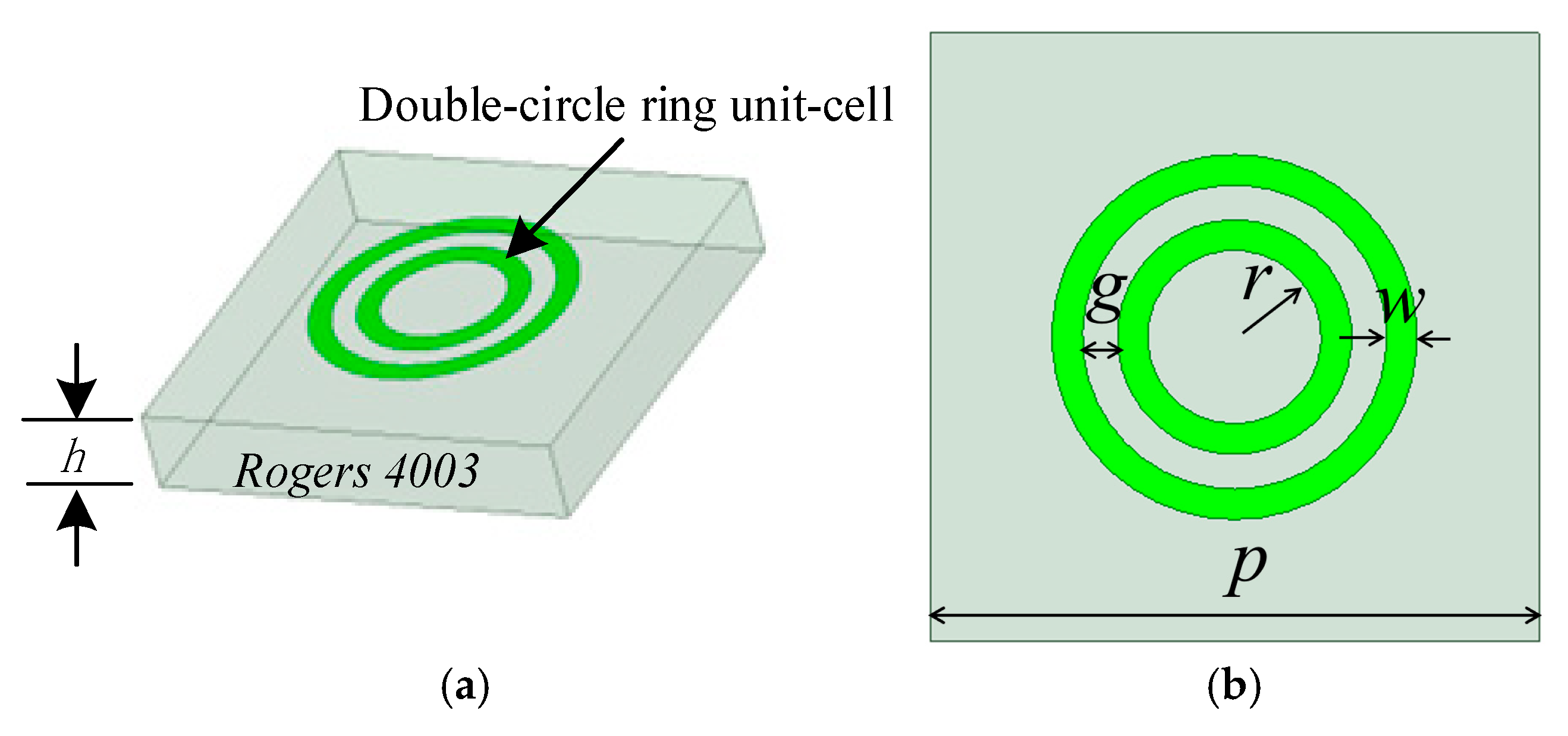
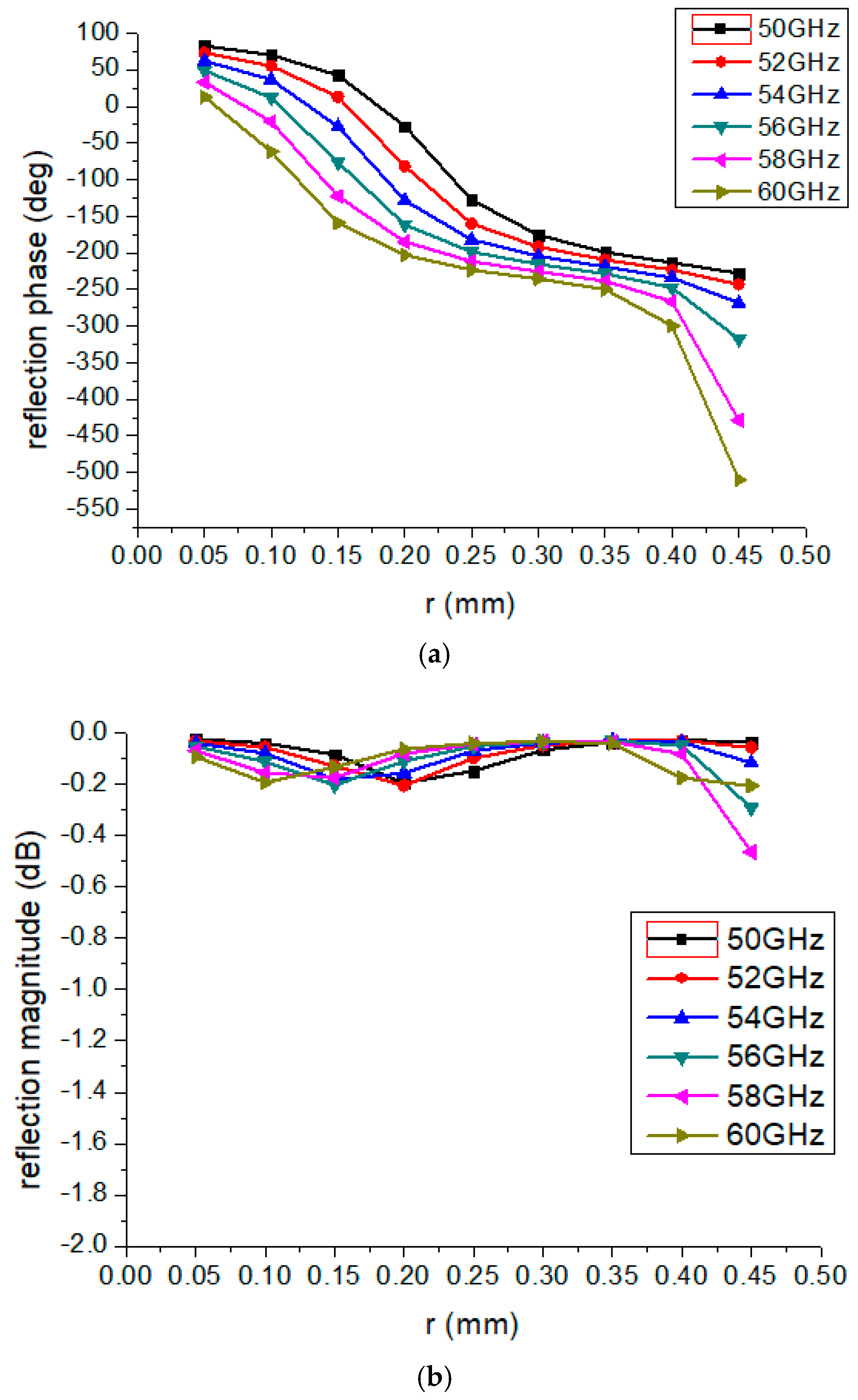

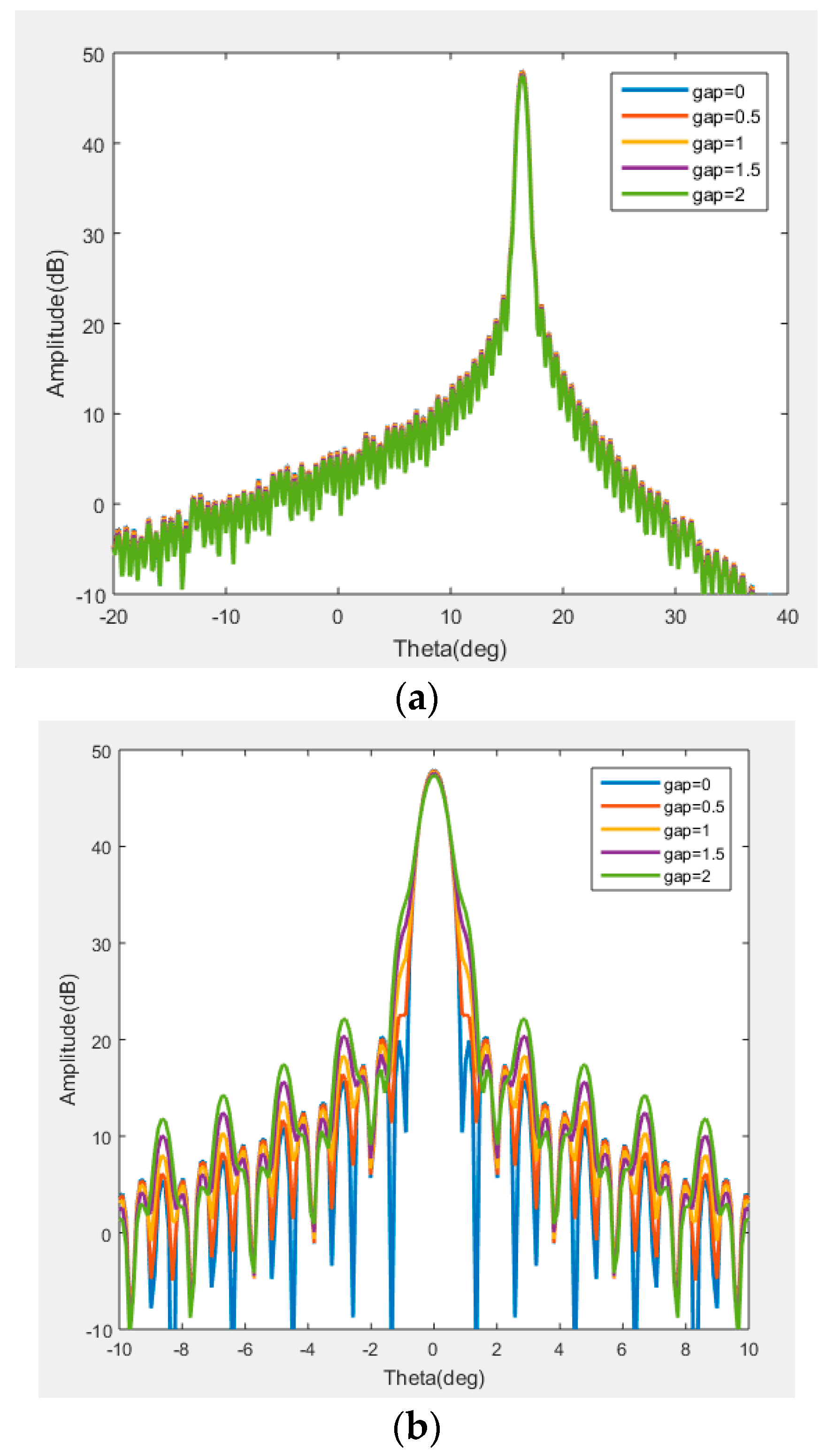
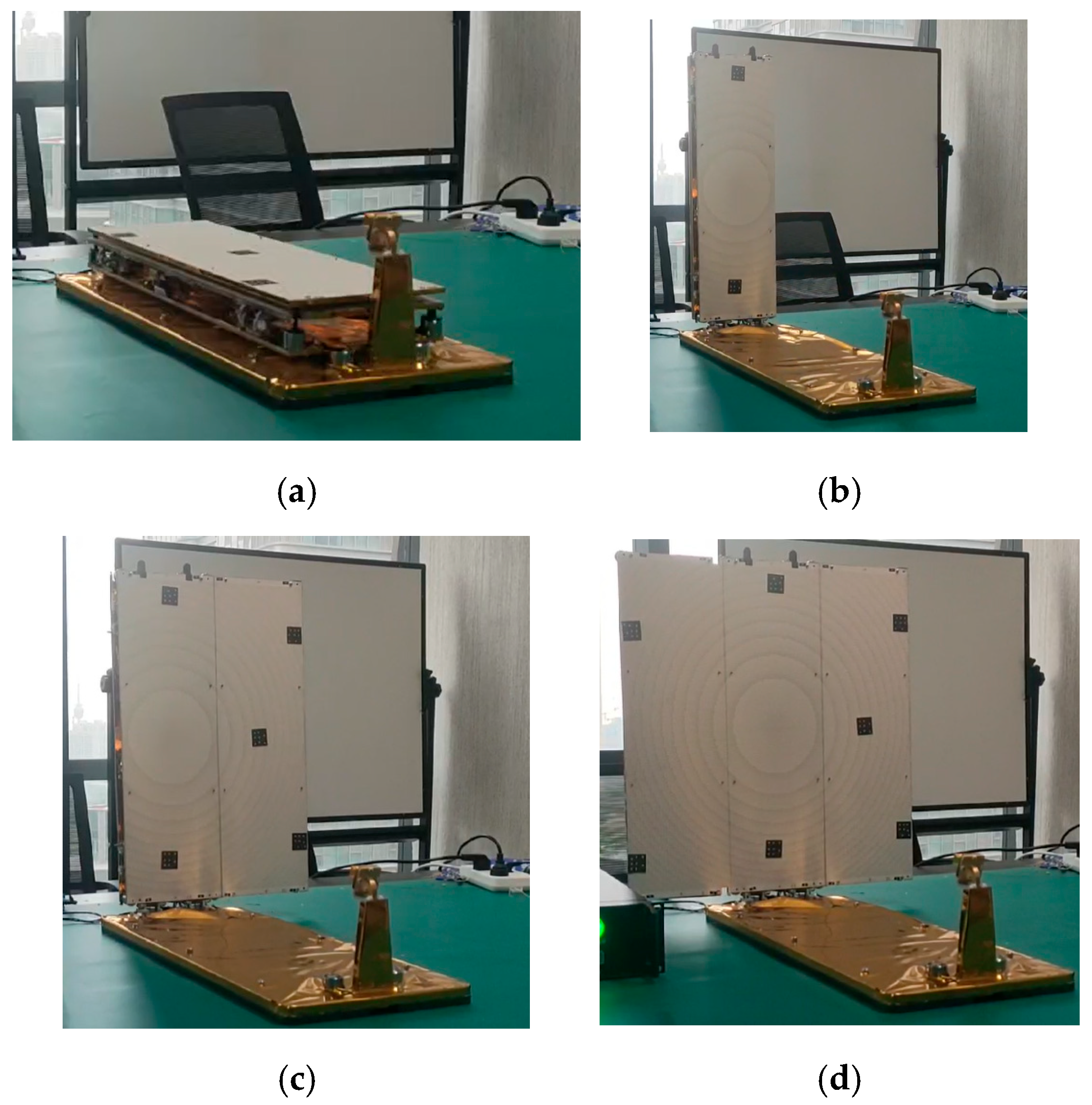
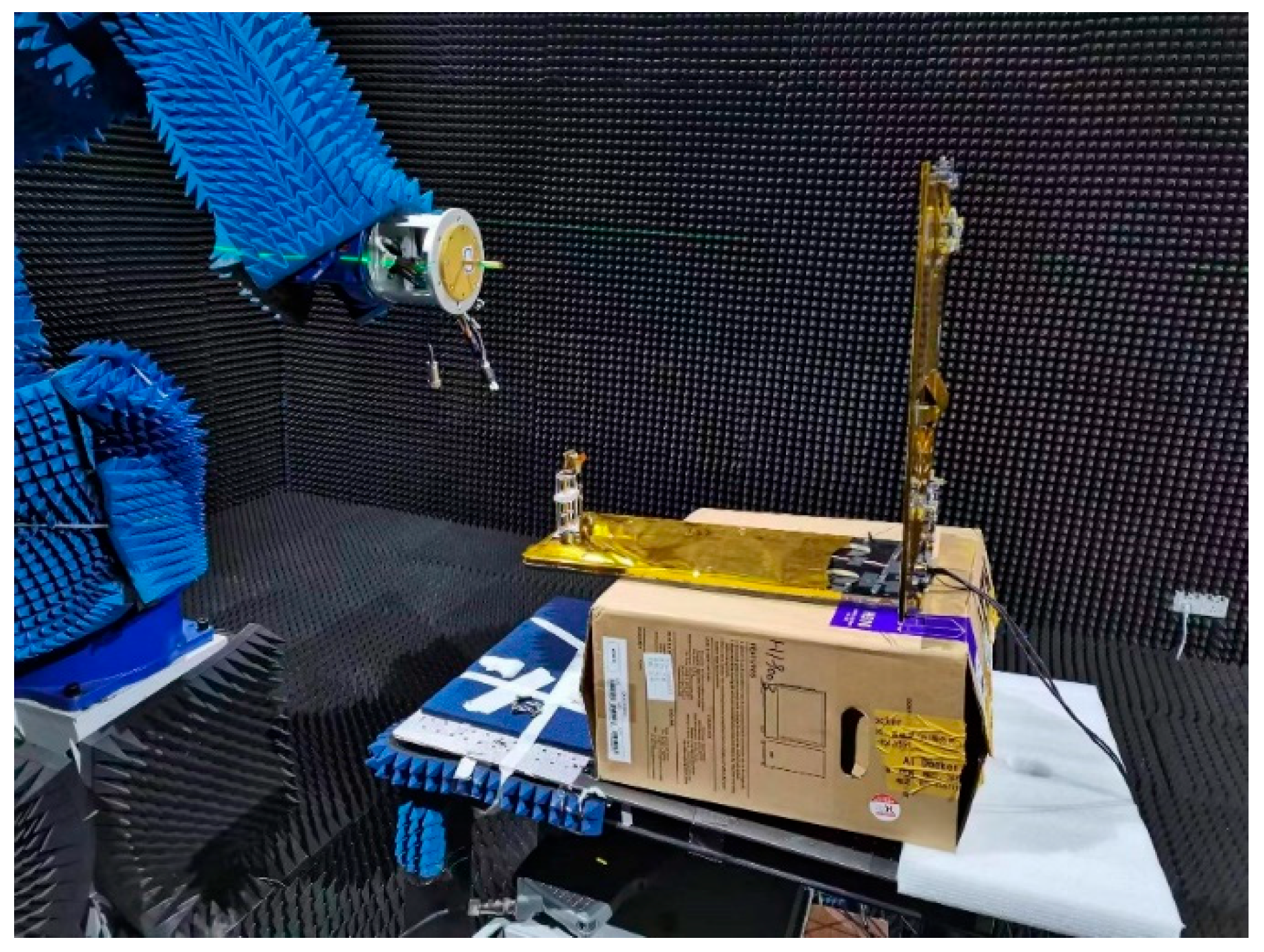
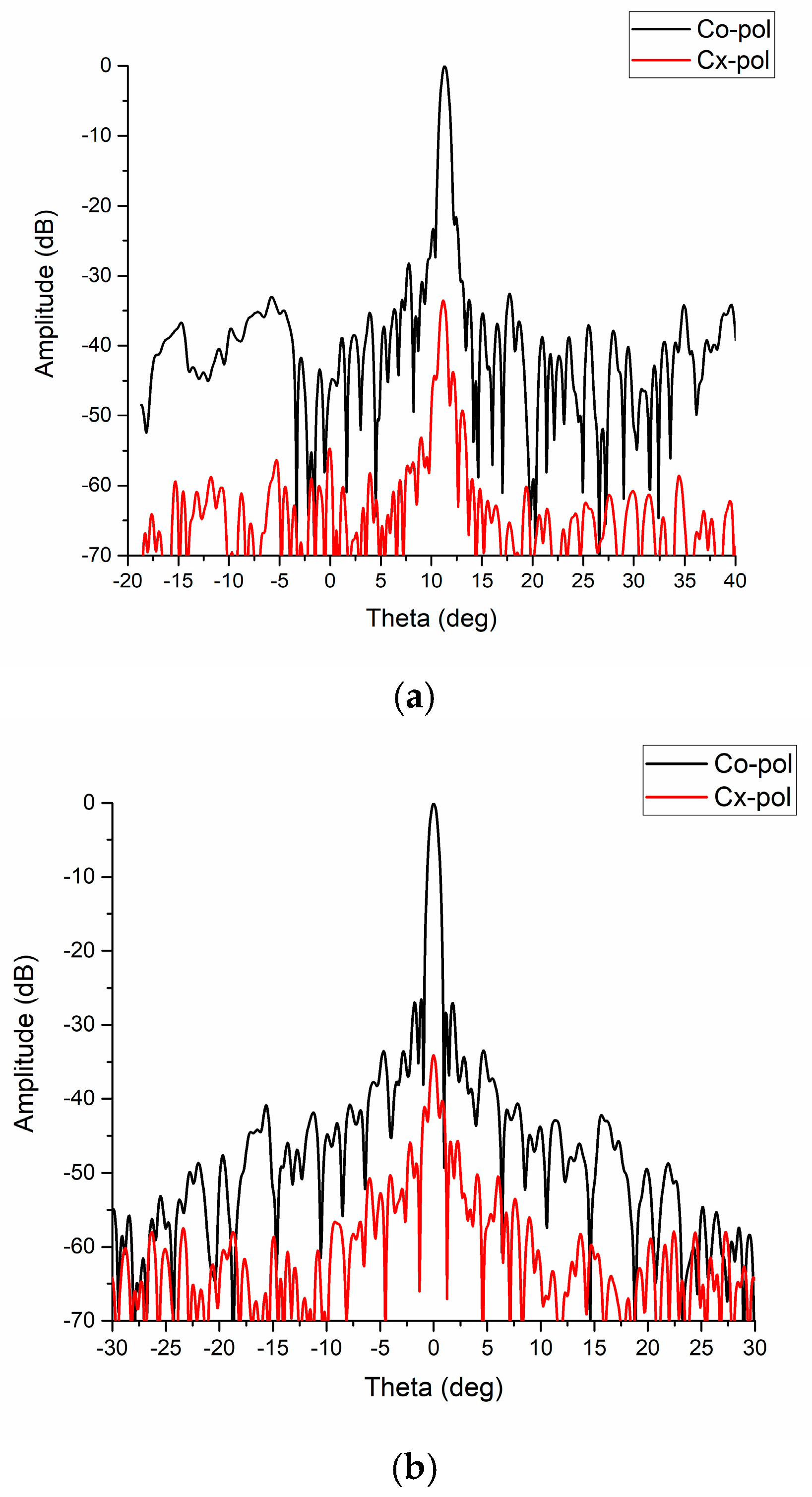
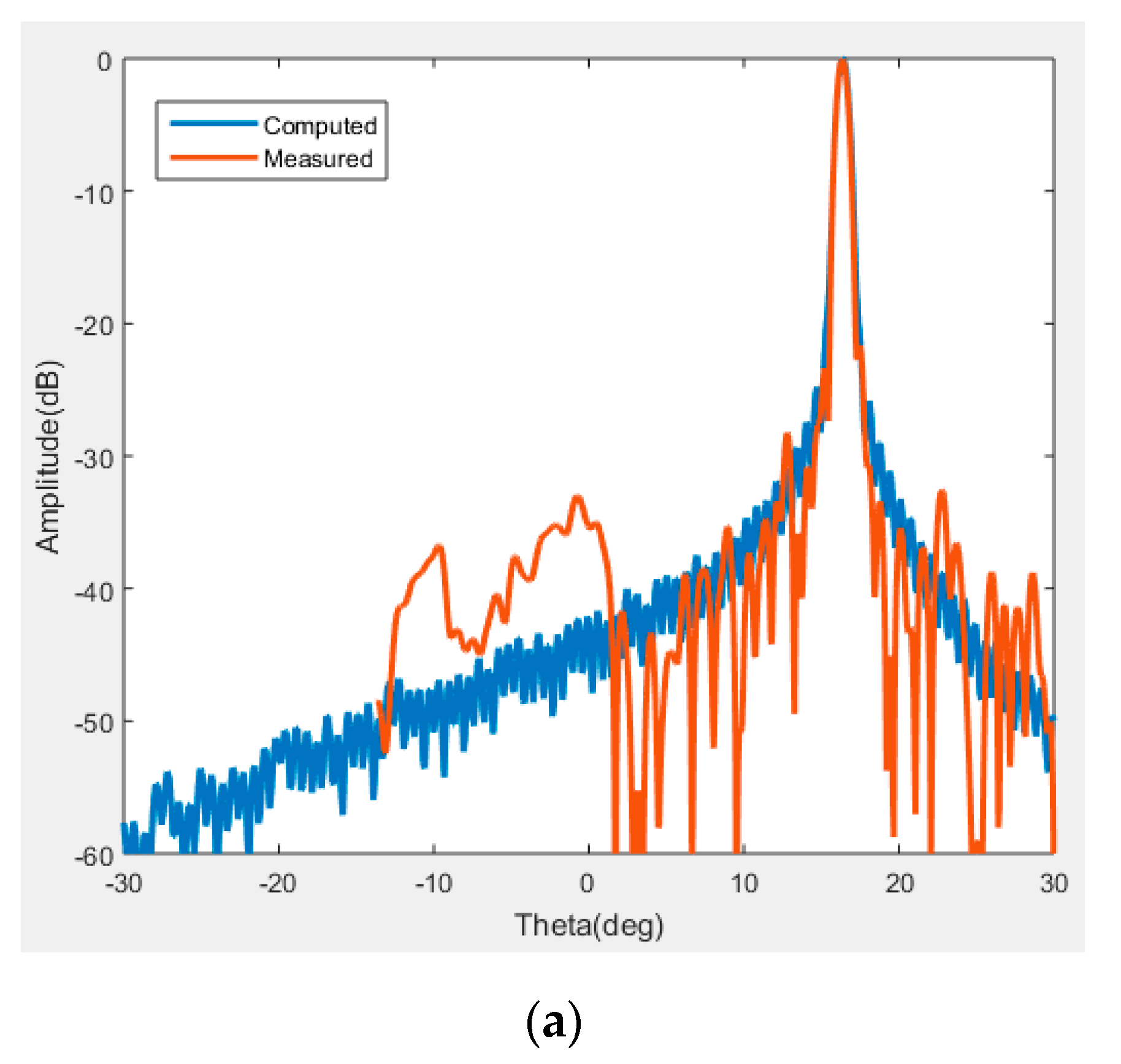
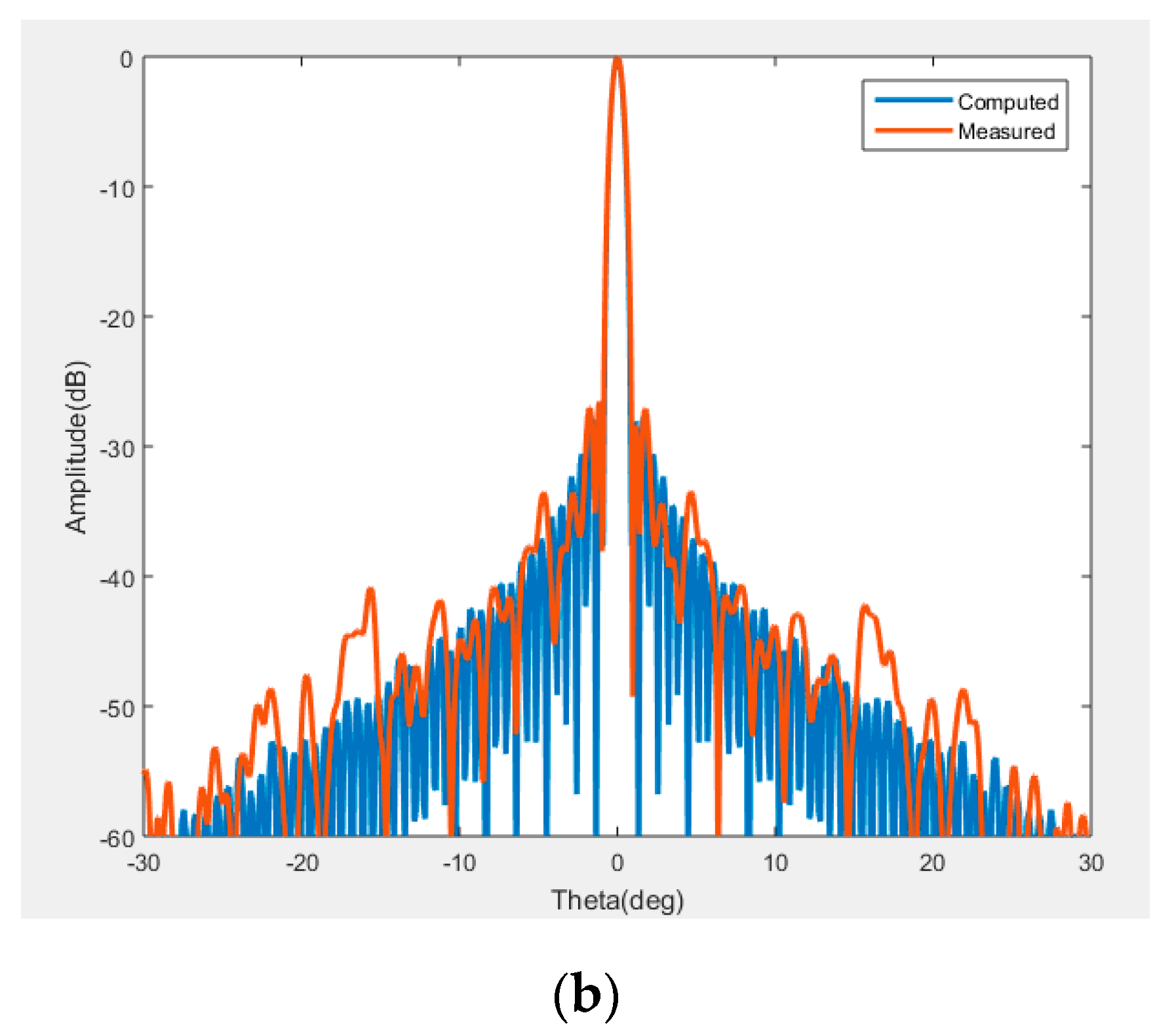
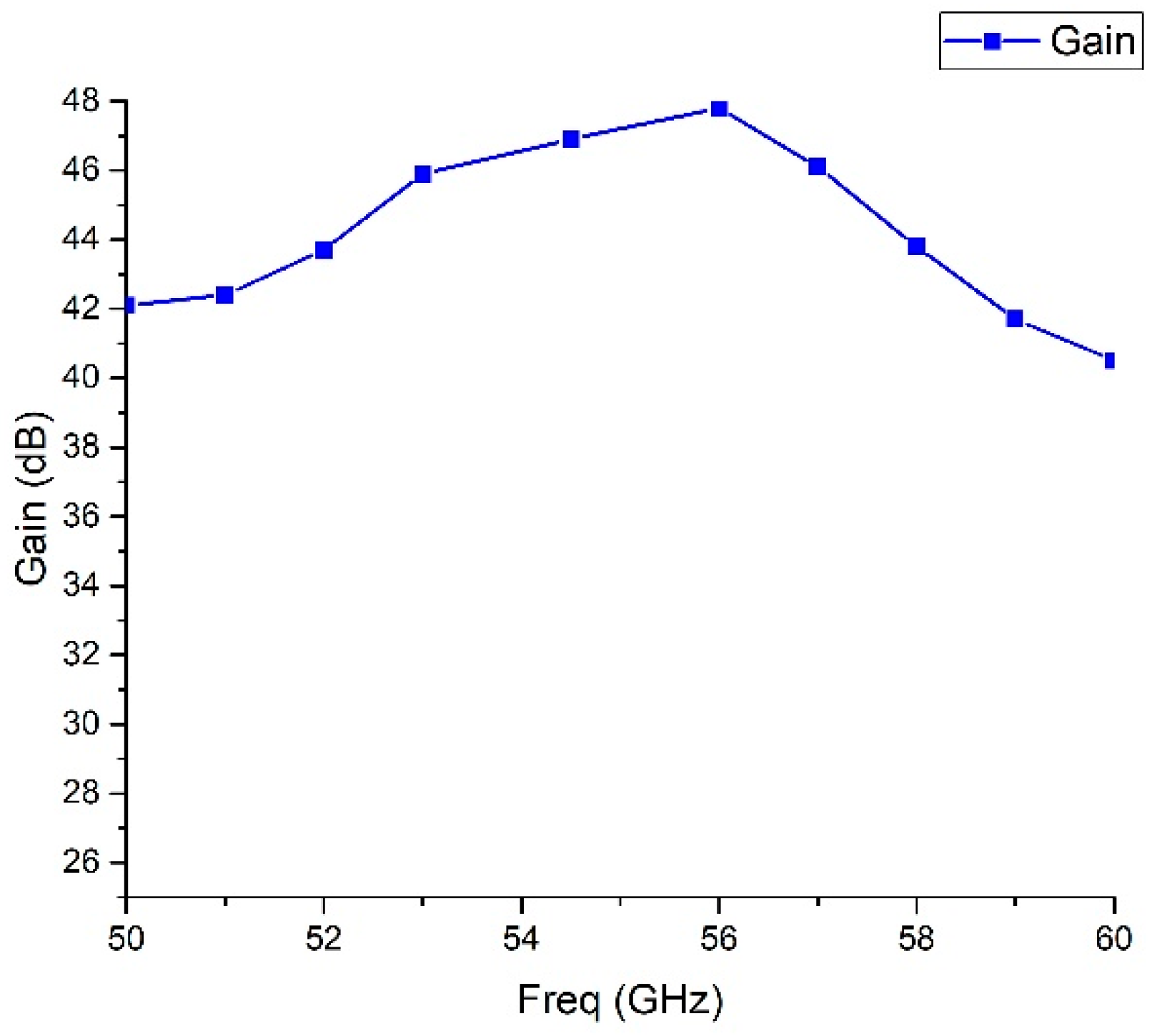
Disclaimer/Publisher’s Note: The statements, opinions and data contained in all publications are solely those of the individual author(s) and contributor(s) and not of MDPI and/or the editor(s). MDPI and/or the editor(s) disclaim responsibility for any injury to people or property resulting from any ideas, methods, instructions or products referred to in the content. |
© 2025 by the authors. Licensee MDPI, Basel, Switzerland. This article is an open access article distributed under the terms and conditions of the Creative Commons Attribution (CC BY) license (https://creativecommons.org/licenses/by/4.0/).
Share and Cite
Liu, G.; Dong, X.; Zhu, D.; Wang, H. High-Efficiency Deployable V-Band Reflectarray Antenna Design, Tolerance Analysis and Measurement. Photonics 2025, 12, 866. https://doi.org/10.3390/photonics12090866
Liu G, Dong X, Zhu D, Wang H. High-Efficiency Deployable V-Band Reflectarray Antenna Design, Tolerance Analysis and Measurement. Photonics. 2025; 12(9):866. https://doi.org/10.3390/photonics12090866
Chicago/Turabian StyleLiu, Guang, Xiaolong Dong, Di Zhu, and Hongjian Wang. 2025. "High-Efficiency Deployable V-Band Reflectarray Antenna Design, Tolerance Analysis and Measurement" Photonics 12, no. 9: 866. https://doi.org/10.3390/photonics12090866
APA StyleLiu, G., Dong, X., Zhu, D., & Wang, H. (2025). High-Efficiency Deployable V-Band Reflectarray Antenna Design, Tolerance Analysis and Measurement. Photonics, 12(9), 866. https://doi.org/10.3390/photonics12090866





